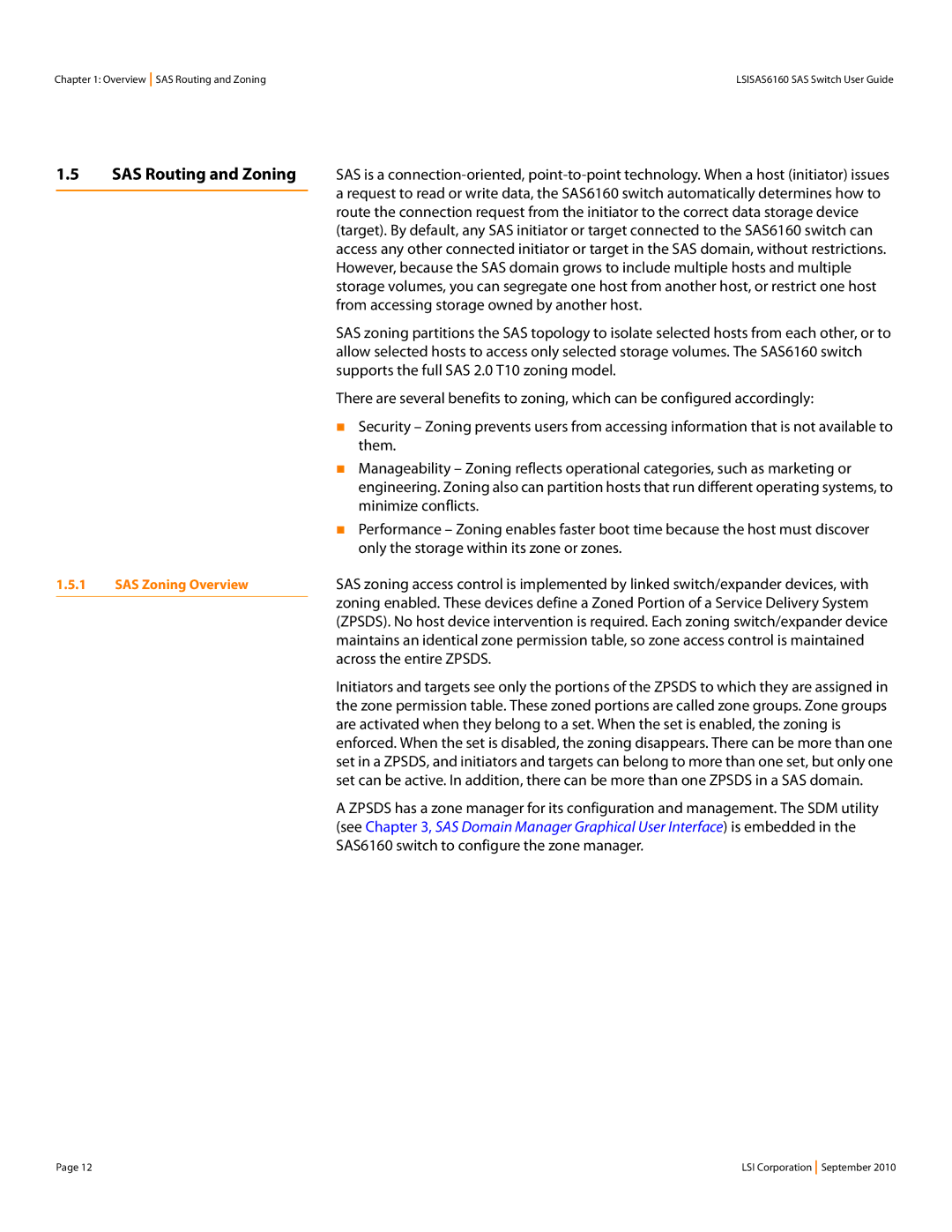Chapter 1: Overview SAS Routing and Zoning | LSISAS6160 SAS Switch User Guide |
1.5SAS Routing and Zoning SAS is a
SAS zoning partitions the SAS topology to isolate selected hosts from each other, or to allow selected hosts to access only selected storage volumes. The SAS6160 switch supports the full SAS 2.0 T10 zoning model.
There are several benefits to zoning, which can be configured accordingly:
Security – Zoning prevents users from accessing information that is not available to them.
|
| Manageability – Zoning reflects operational categories, such as marketing or |
|
| engineering. Zoning also can partition hosts that run different operating systems, to |
|
| minimize conflicts. |
|
| Performance – Zoning enables faster boot time because the host must discover |
|
| only the storage within its zone or zones. |
1.5.1 | SAS Zoning Overview | SAS zoning access control is implemented by linked switch/expander devices, with |
|
| zoning enabled. These devices define a Zoned Portion of a Service Delivery System |
|
| |
|
| (ZPSDS). No host device intervention is required. Each zoning switch/expander device |
|
| maintains an identical zone permission table, so zone access control is maintained |
|
| across the entire ZPSDS. |
Initiators and targets see only the portions of the ZPSDS to which they are assigned in the zone permission table. These zoned portions are called zone groups. Zone groups are activated when they belong to a set. When the set is enabled, the zoning is enforced. When the set is disabled, the zoning disappears. There can be more than one set in a ZPSDS, and initiators and targets can belong to more than one set, but only one set can be active. In addition, there can be more than one ZPSDS in a SAS domain.
A ZPSDS has a zone manager for its configuration and management. The SDM utility (see Chapter 3, SAS Domain Manager Graphical User Interface) is embedded in the SAS6160 switch to configure the zone manager.
Page 12 | LSI Corporation September 2010 |
